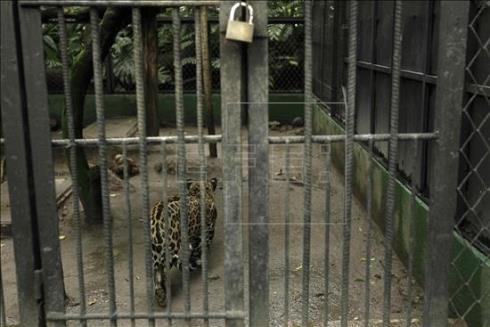Costa Rica News – Denmark is not the only country with a zoo problem. While the privately owned Copenhagen Zoo is under fire for killing four lions just weeks after it euthanized a healthy two-year-old giraffe, government officials in Costa Rica are fighting for the right to close two public zoos and release their 500 animals in the wild or to rehabilitative rescue centers.
 Easier said than done. A recent court decision ruled the government’s contract with nonprofit organization Fundazoo to manage the state-owned Simón Bolívar Zoo Conservation Center and the Conservation Center of Santa Ana must be renewed for another 10 years after it expires in May. While the government’s Ministry of Environment and Energy argued its notification to terminate the contract was sufficient, documents from the court ruling indicate the government missed the deadline by one day, the Tico Times reported.
Easier said than done. A recent court decision ruled the government’s contract with nonprofit organization Fundazoo to manage the state-owned Simón Bolívar Zoo Conservation Center and the Conservation Center of Santa Ana must be renewed for another 10 years after it expires in May. While the government’s Ministry of Environment and Energy argued its notification to terminate the contract was sufficient, documents from the court ruling indicate the government missed the deadline by one day, the Tico Times reported.
But the Costa Rican government—world renowned for its strong conservation and biodiversity policies—is not giving up: It has already filed an appeal, and is planning to pass new regulations regarding animal captivity in state-owned institutions.
“We are getting rid of the cages and reinforcing the idea of interacting with biodiversity in botanical parks in a natural way,” Environment Minister René Castro said at a press conference in July 2013 when the government publicly announced its decision to shutter the zoos. “We don’t want animals in captivity or enclosed in any way unless it is to rescue or save them.”
More than 25 percent of Costa Rican land has been set aside as protected areas to provide habitat for its approximately 500,000 species. That’s an astonishing 4 percent of all the species worldwide, despite covering just .03 percent of the planet’s surface area; the country’s mix of mountain, jungle, and seaside habitats provides for one of the highest densities of biodiversity on the planet.
The government had planned to turn the Simón Bolívar Zoo Conservation Center into a botanical garden and education center, while the Conservation Center of Santa Ana was slated to become a 51-hectare forest reserve. But by the time the government made its announcement, Fundazoo had already filed a court appeal to get its contract renewed for another decade, reported the Tico Times.
Animal rights advocates and environmentalists say Fundazoo—which has overseen the zoos for 19 years—has kept the establishments in poor condition. For example, in 2006, one employee contracted a case of leptospirosis, a bacterial infectious disease spread through the urine of affected animals. The government also tried to end its contract with the organization in 2003. But though a court did rule in 2005 that the government should take back its administrative responsibilities of the zoo, that decision was ultimately thrown out due to a technicality.
If Costa Rica does get the green light to shut down the zoos, it’s not clear if there will be enough room—or enough funding—at the country’s private wildlife rescue centers to support those not strong enough to live in the wild. In late 2012, the popular Tico (Costa Rican) practice of keeping wildlife as pets was outlawed, and as a result, centers were inundated in 2013.
“We have received so many animals this year that we have been forced to turn away animals,” Maria Pia Martin, a wildlife veterinarian at Kids Saving the Rainforest, a rescue center near Manuel Antonio National Park in Puntarenas, told National Geographic.
By Kristine Wong, www.takepart.com

